Interviews
Kimi Takesue Interview: ‘Onlookers’ film @ Cinéma du Réel
Published
2 years agoon
By
Nir Regev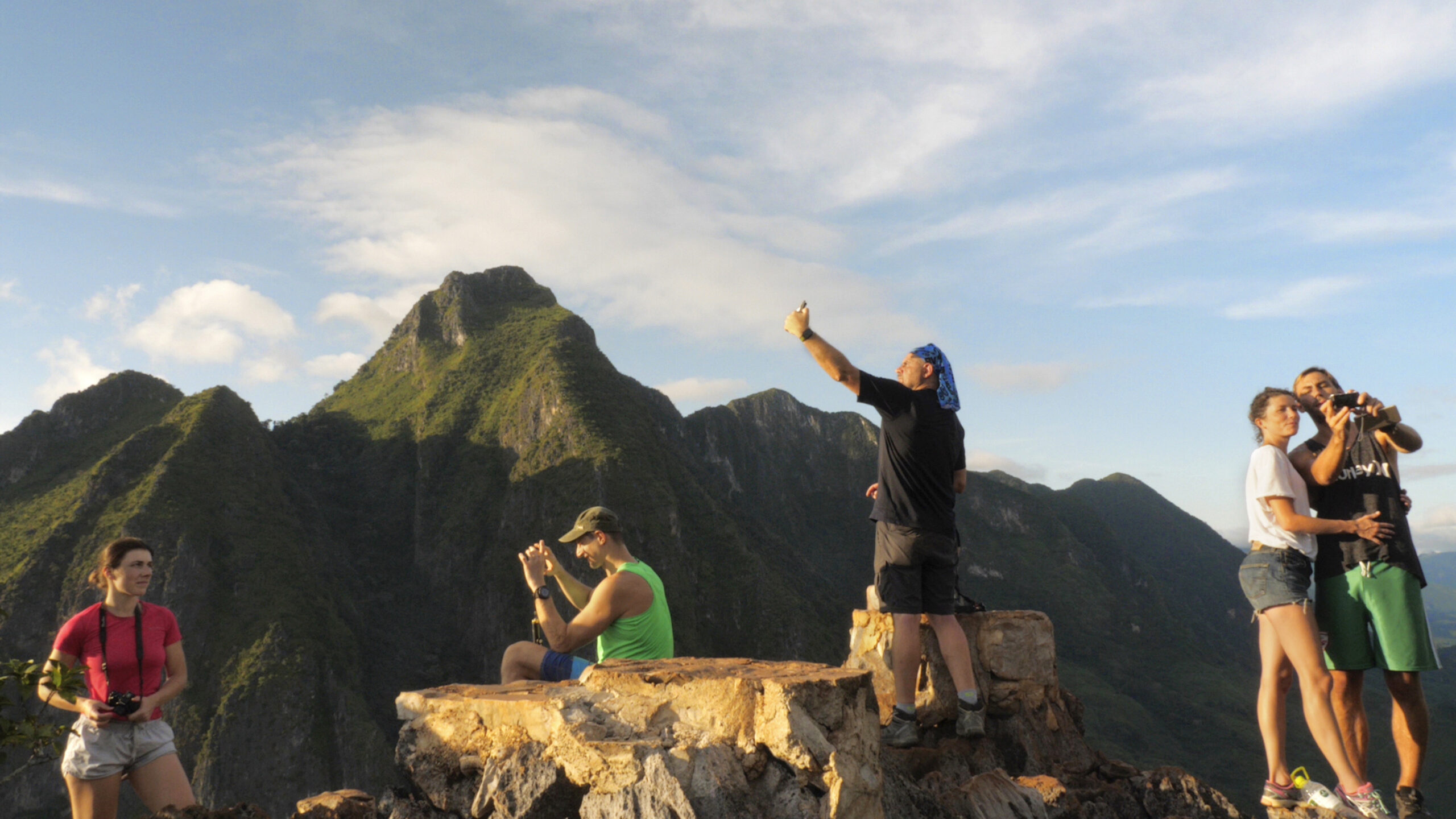
Onlookers film Director Kimi Takesue spoke with The Natural Aristocrat® about shooting the Laos documentary ahead of its screening at the 2023 Cinéma du Réel Film Festival in Paris.
This Cinéma du Réel Film Festival interview with Director Kimi Takesue contains spoilers for her movie ‘Onlookers’. The documentary will screen on Wednesday, March 29 and Friday, March 31 at the festival.
THE NATURAL ARISTOCRAT (NIR REGEV): Was the intention of the street vendor scene (5 minutes in) to show the juxtaposition of rich tourists grazing on snacks, browsing while poor locals sit on the floor and try to sell them cheap novelty trinkets?
KIMI TAKESUE: Onlookers is certainly exploring different aspects of tourism. Of course, part of that is there’s a certain element of economic dependency or interest in terms of locals catering to tourists.
That’s a market scene where you have vendors who are just selling these little local items or trinkets. I think that there’s always the question of power in these relationships. Or at times imbalances that exist particularly within the context of tourism.
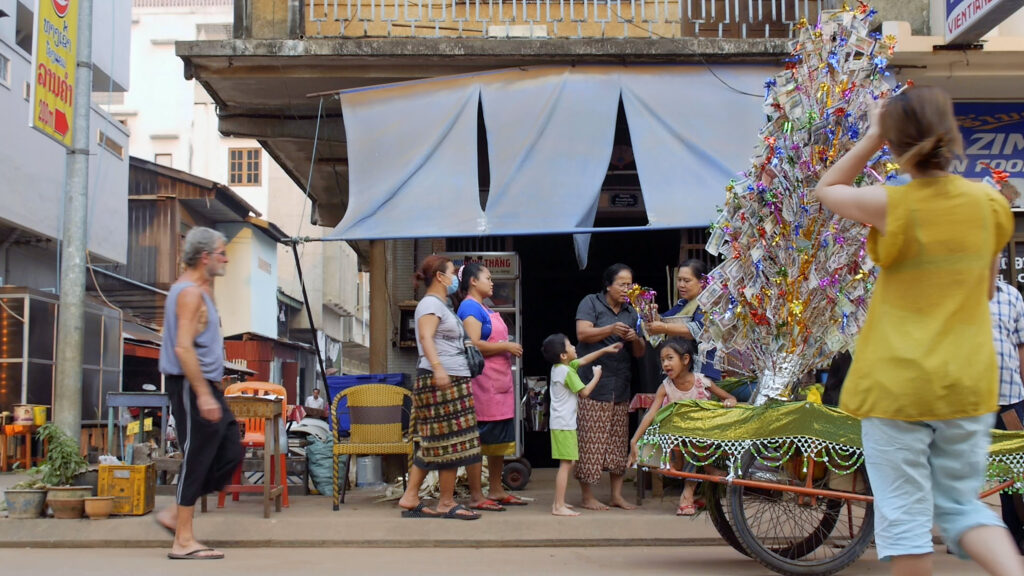
Onlookers movie. Photo Credit: © Kimi Takesue / KimiKat Productions
When you’re part of that economy to a certain extent, you’re having to kind of ingratiate yourself in different ways. I think that’s happening to some degree… But I also think people are just making a living and selling things.
So for me, it’s not like some really profound commentary. It’s really just kind of watching the different aspects of locals interacting with tourists and their day-to-day life.
THE NATURAL ARISTOCRAT: What influenced you cinematically to shoot this scene from the locals perspective at the tourist’s feet looking up while the tourist looks down? Was that a conscious decision?
KIMI TAKESUE: I would say that in terms of the overall advantage point, it’s definitely changing in terms of even asking the question of, ‘Who are the onlookers in this film?’
The title is Onlookers and it’s like the tourists are onlookers, the locals are onlookers. I as the filmmaker am an onlooker. I’m also a tourist. The spectator, the viewer who’s watching the film is an onlooker.
The film I think is exploring different vantage points and the decision to often be low to the ground is not something that is again, making any kind of commentary.
It’s literally how I tend to feel more comfortable shooting because I do like to try to integrate myself in an inconspicuous way.
The whole style of shooting in Onlookers is very slow & patient and integrating into the environment. And so I often am low to the ground and just kind of crouched down somewhere. And that’s why I’m shooting from that vantage point.
THE NATURAL ARISTOCRAT: Onlookers is unique that it lets you the natural sounds of the locale without interruption. What inspired you to shoot the film in this style?
KIMI TAKESUE: It’s an immersive kind of sensorial piece. I guess for me, one of the things that interests me about travel is the way that senses are activated.
I feel this clarity of vision, this heightened sense of color, of sound, of movement. And I think that part of the pleasure is in having those senses activated.
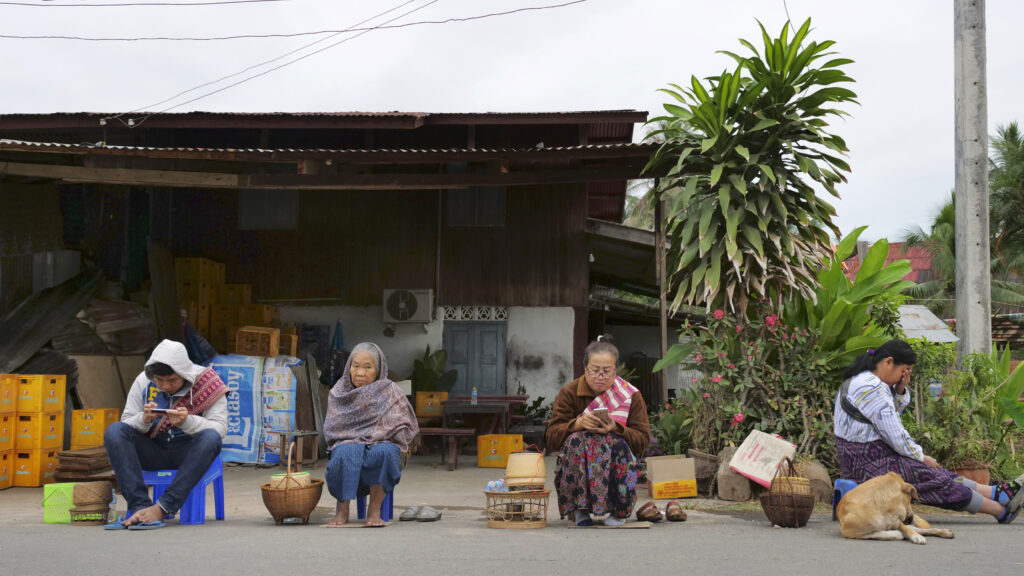
Onlookers movie. Photo Credit: © Kimi Takesue / KimiKat Productions
It’s like one feels more present & focused. That’s what I really enjoy. Part of what I’m capturing is this experience of deep looking and listening.
There is this aural dimension too of just enjoying the sounds because I’m not understanding the local language. It’s an appreciation for all the sounds that exist around me.
THE NATURAL ARISTOCRAT: There’s a scene in Onlookers where an old man desperately tries to get these mid-20s surfer types to take a truck ride.
You can feel he’s acted out this routine thousands of times before but they barely notice him. How many “unseen” background workers did you experience while at Laos?
KIMI TAKESUE: That’s an example of someone who is interacting and intersecting with tourists. You know, as someone who owns a truck who’s driving these tourists to a destination, to go tubing. I do find those interactions interesting and like you’re saying, there’s this kind of this negotiation that’s happening.
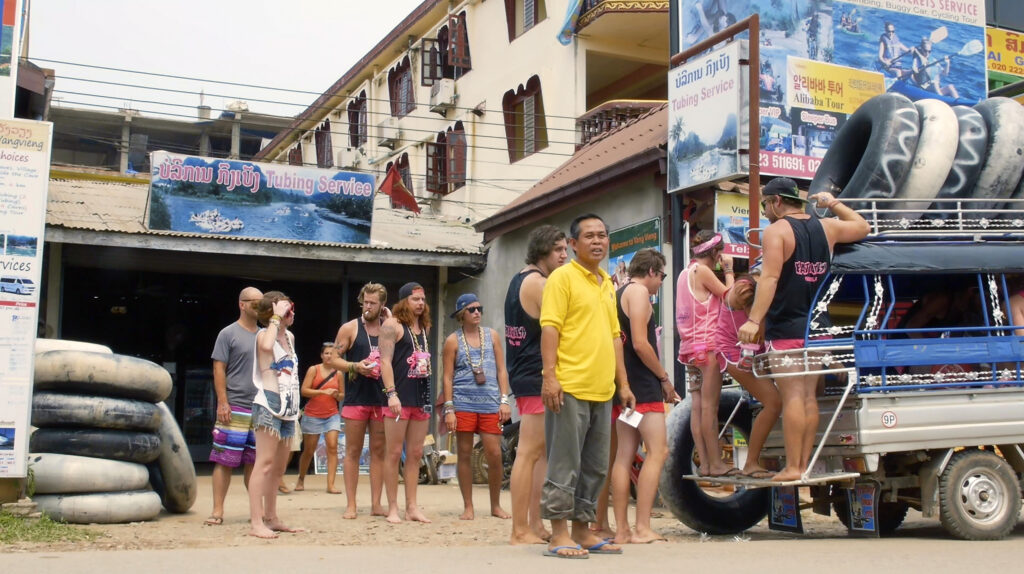
Onlookers movie. Photo Credit: © Kimi Takesue / KimiKat Productions
On one hand, ‘It’s like he’s gone through negotiation with young backpackers trying to get a cheap deal a million times.’ That’s what they seem to be negotiating, right?
They all want to get into one truck and he’s saying, ‘No, you can’t go all in one truck because it’s probably illegal.’ It’s not necessarily illegal, but it’s not safe.
He’s also thinking in economic terms, since they’re trying to all get in one truck. And so there’s that negotiation that’s happening.
It’s also interesting because there’s a young boy, I don’t know if that’s his grandson or who he is, but there’s someone who is working with him.
And it’s interesting to see that child watching the interaction I think in terms of just how kids are learning things that they observe. Or even what that encounter means for him in terms of these backpackers coming.
I think that’s a good example of Vang Vieng, a town that was really altered and changed dramatically by the presence of tourists, particularly backpackers who brought a lot of drugs into that area.
It’s interesting to see what that exposure was like for the local towns people because there was an influx of drugs. How does that impact young people there, young Laotians?
I’m fascinated by these little moments of intersection that are happening between locals and tourists. But also there are a lot of moments in the film where there’s locals who are existing on parallel tracks that are not intersecting with tourists.
I’m originally from Hawaii, a place that is completely dominated by tourism in terms of the economy being very dependent on tourism.
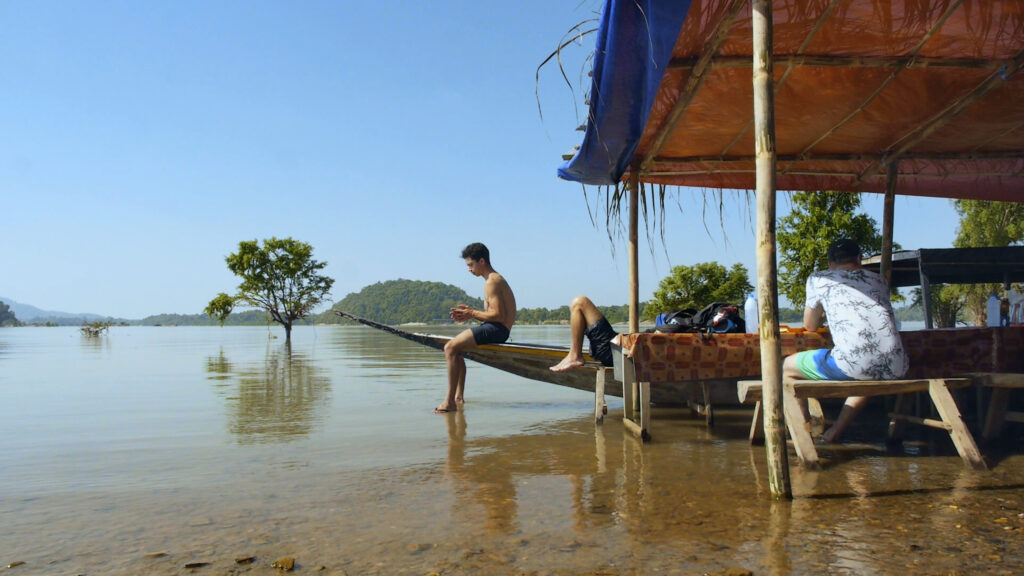
Onlookers film. Photo Credit: © Kimi Takesue / KimiKat Productions
On one hand, there’s an incredible presence of tourists and awareness of things geared towards tourists. But at the same time, there’s local people that are going about their daily lives, that are not intersecting with tourists. So that’s something is also part of this film.
It’s like you’re seeing that there is impact and there are ways in which there is very little impact too.
THE NATURAL ARISTOCRAT: It sometimes felt like the local’s culture and daily life is sold as a kind of exotic exhibit.
Particularly, when the the phone cameras go up to film the monks on the street or even when the couple laugh after hitting the gong. Even though it’s totally innocent tourist stuff. What are your thoughts on that?
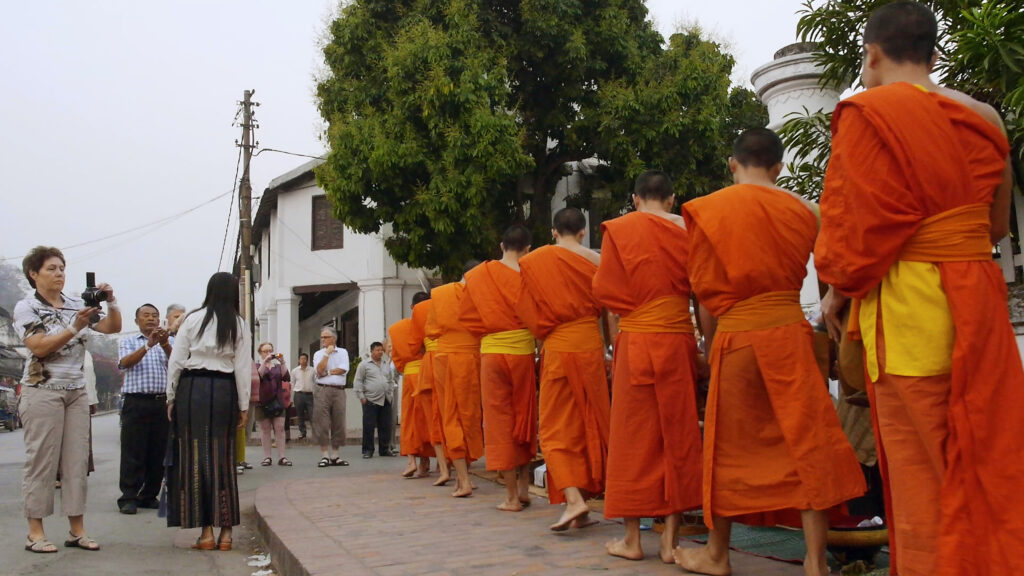
Onlookers film. Photo Credit: © Kimi Takesue / KimiKat Productions
KIMI TAKESUE: Well, I think when a place has a certain dependency on tourism, there’s no doubt that certain aspects of that culture become commodified and turn into a certain form of spectacle.
I think that in Laos, the most prominent image or signifier are the monks and the presence of monks. Buddhist culture is very strong in their culture and there is the daily ritual of the people giving alms to the monks every morning.
It’s a very, very powerful image in terms of monks, in a procession, in these vibrant robes, receiving alms. But do they control the fascination that outsiders have for that? No.
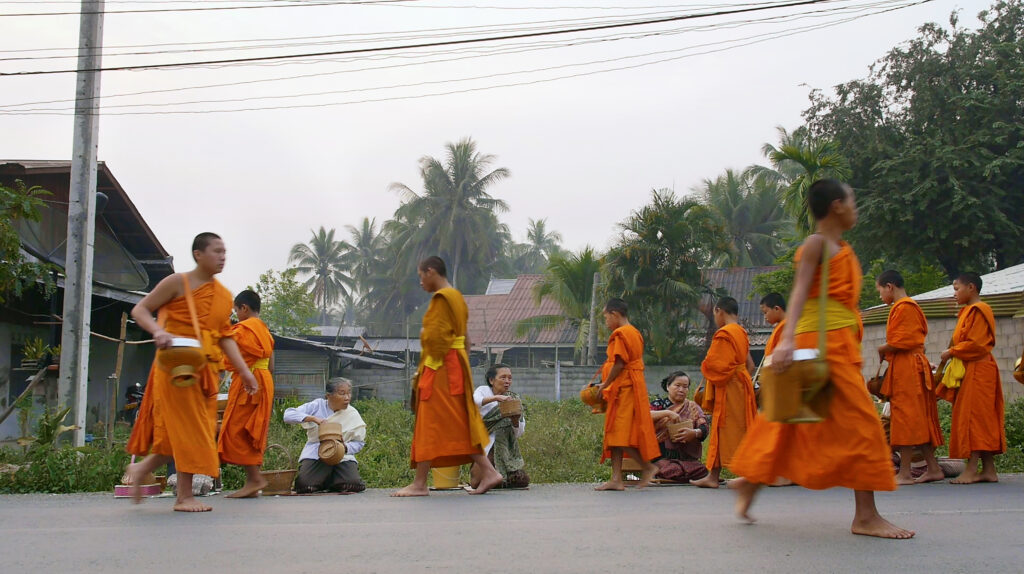
Onlookers movie. Photo Credit: © Kimi Takesue / KimiKat Productions
I don’t think that people are trying to capitalize on that.
If you look at the Laotian tourist industry, at large, those are images that they’re going to promote. Because it’s part of what distinguishes their culture and country, right? In terms of attracting people.
So those images will appear, on say a guidebook. To sort of represent a certain cultural difference or even exoticism. But I don’t think the people amongst themselves are asking in any way to be represented in that way.
In the film, I’m also really trying to sort of fit within that dynamic. I mean, there’s no doubt that the procession of monks is quite profound and it’s quite beautiful. But it’s also amazing to see the people, every day.
The average people who are up every morning, waking up at 4:30 in the morning to make rice, to sit on the side of the road, to then give those offerings to the monks.
That reflects something about the culture, in the sense of generosity and a certain kind of patience and a certain slowness of life that, people do that every single day.
That’s a motif really woven throughout the film. Just the local townspeople who are congregating and waiting every morning to give alms. I found that to be really profound.
THE NATURAL ARISTOCRAT: It feels like life is so slow paced in Laos, particularly in the scene where people are getting off the boat. Everything moves in slow motion compared to somewhere like New York City. How does this effect people’s moods from what you saw?
KIMI TAKESUE: One of the reasons why I was really interested in going to Laos was because I had heard about this very slow pace of life. Where there is this kind of tranquility and ability to be very present.
That was something really intriguing to me, considering the world that we live in that is just so fast paced and distracted in every way.
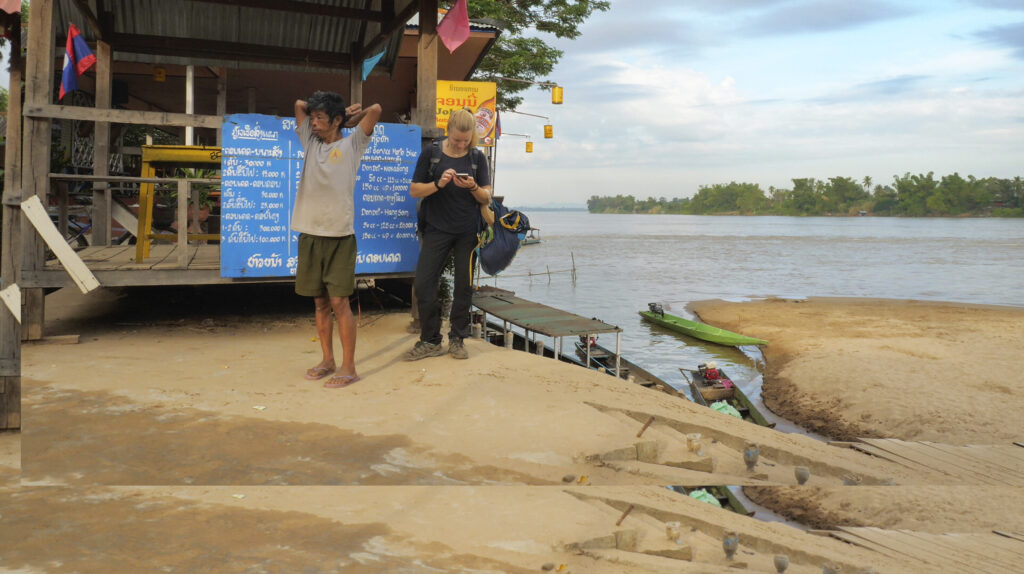
Onlookers film. Photo Credit: © Kimi Takesue / KimiKat Productions
And there is so much change going on in Southeast Asia and development and globalization. It’s really an unusual characteristic of any culture at this point.
In some ways, even the pace of the film is also reflecting that slow pace. That ability to kind of look and listen deeply.
I think in some instances, people are in tune with that, responding to that, and appreciating that.
And then in other instances, tourists are really imposing their own rituals, the things that they do that are familiar onto this other culture.
So people are just kind of congregating and doing what they normally do where they live, right?
There is that question of ‘Well, why are people even bothering to travel if they don’t seem to have that much interest the local culture?’ And are just kind of imposing their own norms and own patterns and rituals onto the place.
But that goes a lot back to economics and tourists feeling in some cases, that ‘It’s a cheap destination for us to hang out at or in.’
But that’s not all you see. From my perspective, Onlookers is also really exploring some of the real pleasures of travel, right?
The appreciation of just being in a place that is allowing you to look and listen deeply. Certainly, you’re being exposed to new ways of being and living that can be very inspiring or enriching.
THE NATURAL ARISTOCRAT: I’ve seen some travel advisories about unexploded landmines in some non-tourist areas of Laos, did this go into consideration when choosing areas to film? Or is it relatively rare?
KIMI TAKESUE: I think, yeah, there are many areas that still have landmines because Laos was one of the most heavily bombed countries of all time during the Vietnam war.
I think there are still real problems with landmines. It’s certainly not along the more traditional tourist path or probably even close to it.
But you would need to be very careful if you were just like literally wandering through the countryside. I mean, I would not do that.
It’s an interesting thing just in that respect when you think about the American history with Laos in the context of the Vietnam War. That it was responsible for bombing this country so intensively.
And yet when you’re traveling, as an American, I didn’t experience any direct resentment towards me. Now I don’t know how people actually felt, but there certainly wasn’t any clear indication of that.
But you would see like small kind of remnants of the war. You might see there’s that one shot of the Italian guy who has a reggae bar pizza place. He’s writing on a a sign there. If you look carefully, there’s a bomb shell that’s been painted with reggae colors.
Little details, reminders of war like that.
I was a tourist, so I was moving along a pretty prescriptive path in terms of how people tend to travel through the country. I was going from north to south from Luang Prabang.
Then I went to a little bit further north to Nong Khiaw and then moved south into Pakse and the 4,000 Islands. And it’s a pretty standard itinerary.
I’m capturing a lot of what I saw along that path, but then I am kind of deviating some from it as well.
I think when you’re traveling alone and sort of able to integrate to some degree, you’re very patient. I’m a pretty non-intimidating presence as a woman traveling alone and filming alone.
So there are a lot of small unexpected encounters then that happen as well. I think you see that particularly, with a lot of children and encounters that I have with kids.
But again, I’m not going out and seeking anything in particular. It’s not like I’m going out with a particular agenda that I’m trying to fulfill or a certain thesis that I’m trying to prove.
I’m really just sort of responding to what I see and what’s unfolding.
THE NATURAL ARISTOCRAT: I’ve read there’s a type of pizza called “Happy Pizza” in tourist areas of Laos that’s spiked with opium. Did you ever encounter this being sold in your travels?
KIMI TAKESUE: You would see signs for that especially in that little area with reggae pizza bar, where the guy is writing on that sign. I think it does say ‘Happy Pizza’ somewhere.
Particularly in that spot in the 4,000 Islands, these little islands. It’s another place where a lot of backpackers congregate at different restaurants, so the locals cater to them.
So those are the places where you would see something like ‘happy pizzas’, ‘happy milkshakes’ or ‘happy mango shakes’.
THE NATURAL ARISTOCRAT: What do you hope Cinéma du Réel Film Festival 2023 audiences take away from Onlookers and Laos itself at the screening?
KIMI TAKESUE: The film had its world premier at the 2023 Slamdance Film Festival, which is a terrific festival that I admire so much for being a true champion of independent filmmaking.
Cinéma du Réel is a film festival that I’ve just so admired and it’s at The Centre Pompidou.
I love that kind of spectrum in terms of real independent cinema, but also like art house cinema and the fact that this is playing at The Centre Pompidou. In the context of an art and museum space.
I do consider Onlookers a film where the aesthetics are very, very important.
I even think about as a reference. I mean, it is a very photographic film, right? It’s kind of structured in these tableaux that are almost like these moving still images.
I think about someone like Henri Cartier-Bresson who talked about the decisive moments as a photographer that are playing out in time. But still have a certain kind of precision in how they unfold, you know, in each tableau.
For me it’s really meaningful to present the film within an art context too, because I’m very curious how it will be viewed and appreciated in that space.
But Cinéma du Réel is also a film festival that’s known for really looking at the history of documentary film. It’s a place where the film is kind of in conversation within the history of documentary and certain aspects of ethnographic film.
Hopefully, there will be this kind of rigorous engagement with the film. I’m looking forward to conversations around that… Because it’s a film that I think is provocative on a lot of different levels, in terms of the different kinds of themes and approaches it takes.
I’m very interested in hearing what a, a French audience makes of the film. That’s an extra dimension too. The, colonial aspect of the French, in terms of the colonial presence, in the context of Laos and how they interpret things. So yeah, I’m very excited about it for those reasons.
THE NATURAL ARISTOCRAT: Why did you want to become a Director originally and why the documentary genre?
KIMI TAKESUE: Actually, I don’t think it’s something where I decided I wanted to be a director outright.
Initially, going way back, I was very interested in film from a more kind of cultural studies theoretical standpoint.
My background was in cultural studies, in women’s studies as an undergraduate. And it was at a time when identity politics was really starting to have a moment where people were talking.
I mean, it’s very similar to this moment actually, in terms of kind of questions about representation and identity.
As an Asian American woman thinking about representation and the lack of our kind on-screen… I did not see images of myself. But my first entry into filmmaking was a bit more theoretical.
Then I started exploring experimental narrative filmmaking. And I have done a combination of films. I’ve also done fiction, but I moved more towards non-fiction as a way to make films in a much more self-sufficient way.
I’ve made a number of films that deal with different kinds of cross-cultural encounters, especially in the context of travel.
I think that I’m just drawn to that theme. In part, because of my own background and my own identity as a biracial person, moving between very different cultural zones between Hawaii as a kid and Massachusetts.
As well as being Japanese American and also white Caucasian and moving between cultural spaces. So, it’s something thematically that I’m very interested in. I think in that biracial experience, I’ve also very much developed this kind of perspective as an observer.
That vantage point of being the observer has really surfaced in a lot of my non-fiction… But also my fiction work where the protagonists are often like real observers kind of on the fringes.
So I think it’s kind of like combining those interests. And then with the interest in travel as well, a number of these pieces have emerged.
THE NATURAL ARISTOCRAT: Thanks Kimi!
KIMI TAKESUE: Thank you!
About Onlookers Director Kimi Takesue: Biography
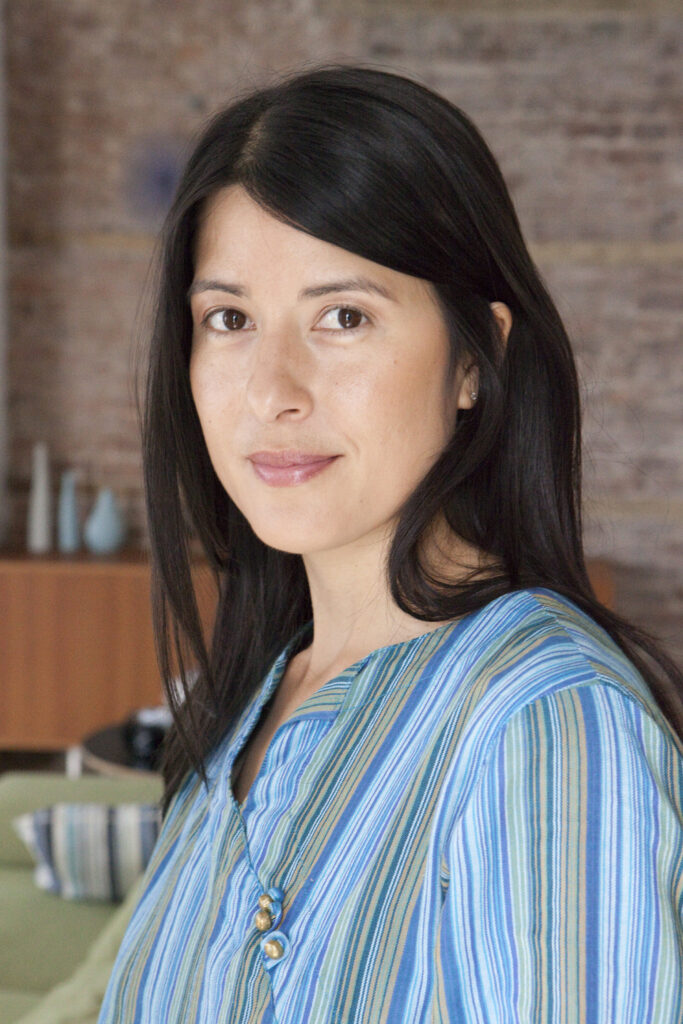
Filmmaker Kimi Takesue – Rutgers University Professor. Kimi Takesue Bio Headshot Photo Credit: Richard Beenen
“Director, Producer, Cinematographer, Sound Recordist, Editor
Kimi Takesue is an award-winning filmmaker working in documentary, experimental and narrative genres. Takesue’s films have screened at more than 250 film festivals and museums internationally including Sundance, Locarno, Toronto, New Directors /New Films, SXSW, and MoMA and have aired on PBS, IFC, and the Sundance Channel.
Takesue is the recipient of Guggenheim and Rockefeller Fellowships, as well as the “Breakthrough Award” from Chicken and Egg Pictures recognizing women who have made significant contributions to the documentary field. Takesue is Professor in the Department of Arts, Culture and Media at Rutgers University-Newark.
Takesue’s feature documentary 95 AND 6 TO GO, a portrait of her Japanese American grandfather in Hawai’i, was nominated for the 2017 European Doc Alliance Award and screened at over twenty-five international film festivals, including CPH:DOX, Doclisboa, DOC NYC, and Dok Leipzig.
The film won the Special Jury Prize for Best Documentary Film at Indie Memphis and the Los Angeles Asian Pacific International Film Festival.
Takesue’s critically acclaimed Ugandan feature documentary WHERE ARE YOU TAKING ME? was commissioned by the International Film Festival Rotterdam and premiered at the festival, followed by screenings at MoMA Documentary Fortnight and the Los Angeles Film Festival.
Her films are distributed by Women Make Movies, New Day Films, and the Criterion Channel.”
Follow Kimi Takesue on Social Media
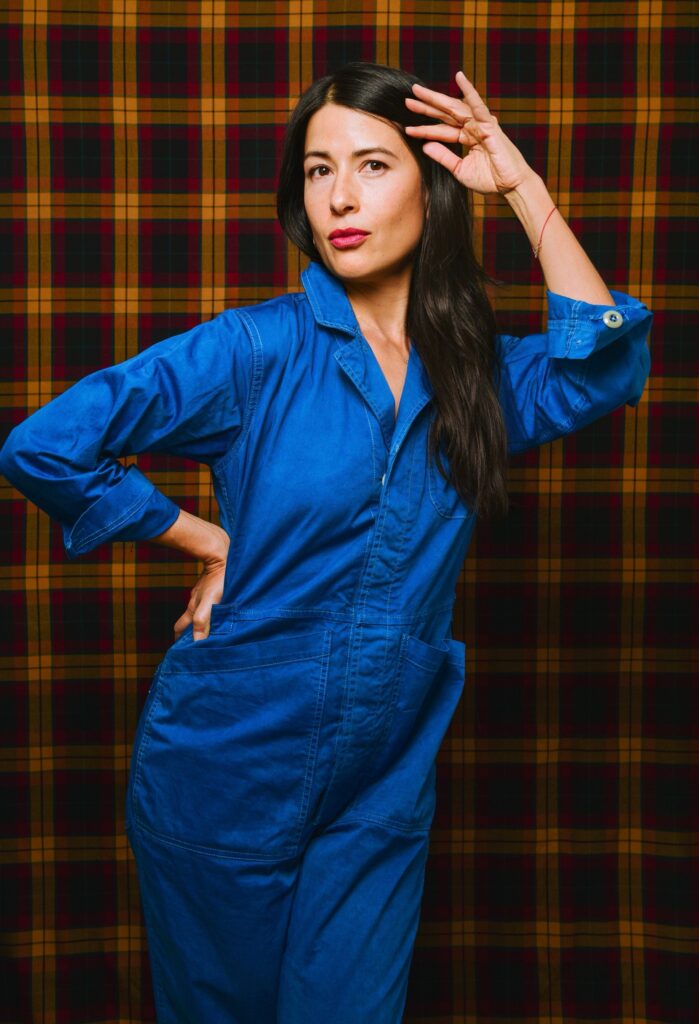
Onlookers’ Kimi Takesue glamour shot. Photo Credit: Lauren Desberg
Follow filmmaker Kimi Takesue on Instagram and her official website. You can also find Onlookers film on Instagram & Twitter and its official website.
You can also find Kimi’s earlier film ‘95 and 6 to Go‘ on Instagram.
Onlookers Movie International Premiere Showtimes
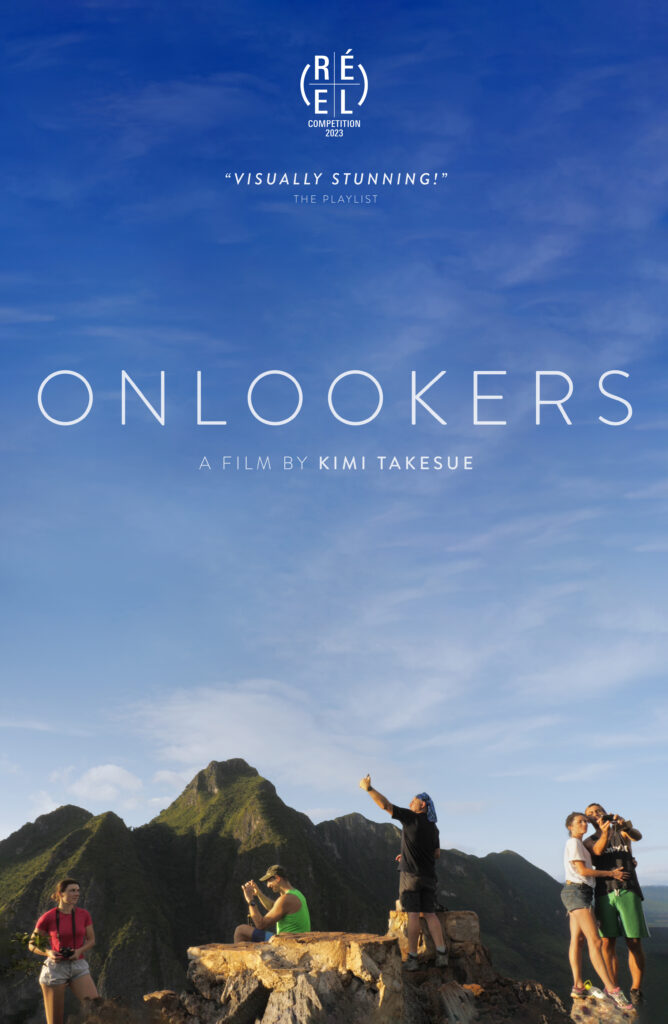
Onlookers at Cinema Du Reel 2023 film festival. Cinema du Reel Submission – Onlookers Movie Poster. Photo Credit: © Kimi Takesue / KimiKat Productions
Film Festival: Cinéma du Réel 2023
Showtimes: Wednesday, March 29 at 9:00pm / CENTRE POMPIDOU -Cinema 1, PARIS
Friday, March 31 at 4:30pm / mk2 BEAUBOURG, PARIS
– Go to Cinema du Reel Film Festival to purchase advance screening tickets for Onlookers. Plus check out the full lineup of Cinema du Reel 2023 submissions.
Onlookers Movie Trailer
Check out the official Onlookers film trailer above!
More Asian Cinema Director Interviews
Be sure to read:
– Mayu Nakamura Interview: ‘She is me, I am her’ @ Japan Society
– Naoko Ogigami Interview: Riverside Mukolitta @ Japan Society
Visit the Film section on The Natural Aristocrat® for the latest industry news, exclusive interviews, reviews, and previews!
Nir Regev is the founder of The Natural Aristocrat. You can directly contact him at [email protected] for coverage consideration, interview opportunities, or general comments.

